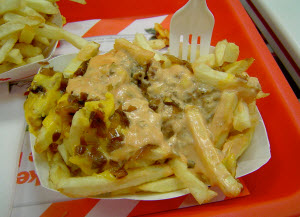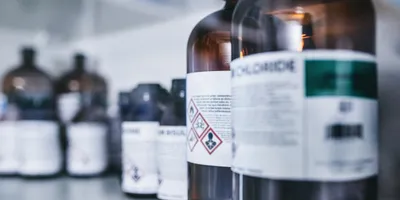 The U.S. Food and Drug Administration recently finalized two rules requiring that calorie information be listed on menus and menu boards in chain restaurants, similar retail food establishments and vending machines with 20 or more locations. Qfl247, Wikimedia Commons
The U.S. Food and Drug Administration recently finalized two rules requiring that calorie information be listed on menus and menu boards in chain restaurants, similar retail food establishments and vending machines with 20 or more locations. Qfl247, Wikimedia Commons
“Americans eat and drink about one-third of their calories away from home and people today expect clear information about the products they consume,” said FDA Commissioner Margaret A. Hamburg, M.D. “Making calorie information available on chain restaurant menus and vending machines is an important step for public health that will help consumers make informed choices for themselves and their families.”
The menu labeling final rule applies to restaurants and similar retail food establishments if they are part of a chain of 20 or more locations, doing business under the same name and offering for sale substantially the same menu items. Covered food establishments will be required to clearly and conspicuously display calorie information for standard items on menus and menu boards, next to the name or price of the item. Seasonal menu items offered for sale as temporary menu items, daily specials and condiments for general use typically available on a counter or table are exempt from the labeling requirements.
Some states, localities and various large restaurant chains are already doing their own forms of menu labeling. The 1990 Nutrition Labeling and Education Act, the law establishing nutrition labeling on most foods, did not cover nutrition labeling for restaurants and other ready-to-eat foods. In the years that followed, states and cities created their own labeling requirements for such foods. These federal standards will help avoid situations in which a chain restaurant subject to the federal requirements has to meet different requirements in different states.
The FDA considered more than 1,100 comments from stakeholders and consumers in developing these rules. In response to comments, the FDA narrowed the scope of foods covered by the rule to more clearly focus on restaurant-type food, made other adjustments such as ensuring the flexibility for multi-serving dishes like pizza to be labeled by the slice rather than as a whole pie, and provided establishments additional time to comply with the rule.
In addition, the menu labeling final rule now includes certain alcoholic beverages served in covered food establishments and listed on the menu, but still provides flexibility in how establishments meet this provision. The majority of comments supported including alcohol because of the impact on public health. The menu labeling rule also includes food facilities in entertainment venue chains such as movie theaters and amusement parks.
Restaurants and similar retail food establishments will have one year to comply with the menu labeling requirements.
To help consumers understand the significance of the calorie information in the context of a total daily diet, under the rule, menus and menu boards will include the statement:
“2,000 calories a day is used for general nutrition advice, but calorie needs vary.”
The menu labeling final rule also requires covered establishments to provide, upon consumer request and as noted on menus and menu boards, written nutrition information about total calories, total fat, calories from fat, saturated fat, trans fat, cholesterol, sodium, total carbohydrates, fiber, sugars and protein.
The vending machine final rule requires operators who own or operate 20 or more vending machines to disclose calorie information for food sold from vending machines, subject to certain exceptions. Vending machine operators will have two years to comply with the requirements.
The two final rules are available in the Federal Register:











